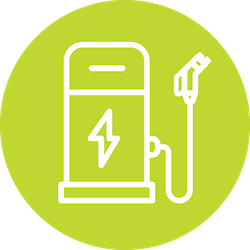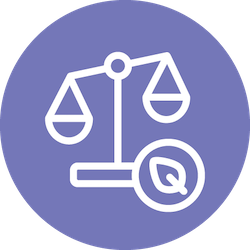Uncover Projects at Risk if Cap-and-Invest Funding is Lost
The Risk of Repeal
In the Evergreen State, we value clean air, healthy communities, and forward progress. That’s why we lead the nation in natural beauty, quality of life, and clean energy. Because of the Cap-and-Invest Climate Commitment Act, it’s no longer free to pollute in Washington. The state’s biggest polluters are funding investments in a clean, prosperous future.
Yet the Climate Commitment Act remains vulnerable to weakening or repeal, including through legislative or regulatory actions, putting thousands of projects and hundreds of programs in communities all across the state at risk of being eliminated, scaled back, or delayed. Without this Cap-and-Invest program, ferries would lose funding. Road and bridge improvements could be delayed. Plans for port electrification and vehicle charging infrastructure would be scuttled. Federal funds and private investment could redirect to other states. And we’d extend our dependence on price-volatile and polluting fossil fuels.
Without Cap-and-Invest funding, the legislature would need to either raise substantial new taxes or make severe program cuts to balance the budget, and would likely employ more costly strategies to meet state climate goals.
Mapping Investments, Exploring Risk
The Risk of Repeal is an interactive educational tool that offers clarity, transparency, and detail about state-directed investments. Climate Commitment Act investments encourage innovation, create new jobs, safeguard natural resources, improve air quality, accelerate the adoption of lower fuel cost technologies, revive and clean up an aging ferry fleet, improve the mobility of people and goods, strengthen a cleaner power grid, and more.
This map, inspired by the California Climate Investments map, is a tool to dig deeper and learn how the Climate Commitment Act is putting shovels into the ground across this state, leading Washington towards a cleaner and more prosperous future.
The Risk of Repeal mapping tool gives you the opportunity to explore where the state is investing Climate Commitment Act revenues and to grapple with which of those investments face the highest risk if the Climate Commitment Act is weakened or repealed. Investments are organized both as a map and a downloadable database, enabling additional independent analysis. The Risk of Repeal mapping tool incorporates investments from the interrelated seventeen-billion dollar Transportation budget known as Move Ahead Washington (which receives $5.2 billion directly from the Climate Commitment Act over sixteen years). What investments will you uncover as you explore the map and database?
Washington’s Climate Commitment Act
The Climate Commitment Act is Washington’s Cap-and-Invest program which caps the majority of carbon pollution in the state and invests money raised directly from large polluters towards a variety of programs spread across the state via seven investment accounts. It’s the central strategy for the state to reduce its carbon pollution while improving air quality in highest risk communities. The Climate Commitment Act is designed to ensure large pollution sources meet an emissions reduction course to net-zero by 2050 set in state statute, but has only been in operation since 2023.
Map Version and Data Download
Map Version: RoR-L.05-24.1 (updated: 5/28/2024)
As funded programs turn into awarded projects, we will update the map. Notice something missing or inaccurate? Need technical assistance? Have a suggestion to improve the tool? We welcome your feedback: riskofrepeal@cleanprosperousinstitute.org.
User guides on navigating the map and data tables as well as additional background and definitions can be found in the menu at the top of the page. To download the complete dataset as a spreadsheet, click here. For more summary information and graphics about the dataset, click here.
Map Quick Guide Diagram


Map Glossary
Investment Categories


Active Transportation: Projects focused on improved walking and biking access. The primary funding account for this category is the Climate Active Transportation Account within the Move Ahead Washington transportation budget.


Buildings, Innovation, and Clean Energy: A range of decarbonization projects focused on efficiency, renewables, and reduced fossil fuel consumption that Includes buildings, power sector, and industrial or hard-to-decarbonize sector investments.


Electric Transportation: Non-transit, on-road focused investments in electric vehicle charging and electric vehicles.


Environmental Justice Communities: Investments with an intentional and direct focus on improving Environmental Justice process and outcomes.


Ferries: Projects focused on capital costs of electrifying the Washington State Ferry system and some passenger ferry routes.


Fish Barrier and Habitat: Projects intended primarily to improve salmon or other fish access and habitat improvement.


Freight and Facilities: Projects focused on port or rail activities and the movement of goods across or to and from the state.


Natural and Working Lands: Agricultural, wildfire, and land conservation projects, not including those that are primarily for fish habitat.


Planning and Implementation: Climate Commitment Act and broad programmatic planning and implementation efforts, including general staffing. Planning efforts directly tied to investments or outcomes that fit in other investment categories may be assigned to those categories.


Public Transit: Projects that address ridership and fares, expanded or enhanced service, and capital projects for buses and bus infrastructure. Transit electrification efforts are shown as Public Transit investments and not Electric Transportation. The primary funding account for this category is the Climate Transit Programs Account within the Move Ahead Washington transportation budget.


Roads and Bridges: No high risk projects are in this category, which includes investments from the broader Move Ahead Washington Transportation budget which received roughly 30% of its funding from the Climate Commitment Act.


Tribal-Led: Investments where a project lead or project partner is a Tribal government or entity. This icon is based on a Tribal logo used for certain work programs of the US EPA.
Investment Risk Level
Investment risk levels are designed to filter for projects at greater (High Risk, Medium Risk) or lesser (Low Risk, Not At Risk). In general:
High Risk projects are mostly or fully funded from the Climate Commitment Act AND are specifically dependent on the program continuing beyond 2024 based on budget language OR are with a heavy future focus in “total” spending rather than near-term (“authorized”) investments. No Move Ahead Washington projects are categorized as high risk.
Not At Risk projects have a minimal share of funding from the Climate Commitment Act or are scheduled to be completed in 2024 without longer-term funding planned.
Medium Risk and Low Risk projects fall in between, with some but not all or nearly all of funding from related investment accounts, lower emphasis on planned future spending, and no budget provision to stop funding or spending in 2025. Medium risk projects tend to have higher shares of funding from relevant accounts and a higher share of funding beyond the authorized funding.
Prioritized Community Investments
The Climate Commitment Act includes two categories of priority community investments that are emphasized for certain percentage thresholds of total investments made with cap-and-invest revenue. More detail can be found in our Background and Details as well as the law itself: RCW 70A.65.230. Through this database, both the investments directed at “direct and meaningful benefits to vulnerable populations within the boundaries of overburdened communities” (35% minimum, 40% goal) and, within these investment totals, a 10% share for “ programs, activities, or projects formally supported by a resolution of an Indian tribe, with priority given to otherwise qualifying projects directly administered or proposed by an Indian tribe” are compiled and tracked.
We note two important details about this filter:
- The definitions of what qualifies towards these investment minimums are incomplete. We expect some movement both in and out as the criteria are clarified and locations of future investments become clearer.
- Some investments are expected to provide a share between none and all toward priority communities, which is particularly true in the broader “unmapped” programs. Our highest-level, summed total presented on the mapping tool itself does not account for these partial allocations. Therefore, CCA investments as reported in that summary data may not be accurate if directly used to draw conclusions about funding shares.
Funding Amounts - Authorized or Total
Authorized funding is approved funding through the current biennium. Authorized funding does not include planned future spending or any extension of funding for “ongoing” projects in the operating budget.
Total funding includes investment funding from any stage of the project life. While some operating budget funding is indicated as “ongoing” we do not include any additional planned funding in this database unless the ongoing funding amounts are specified.
Please note that funding totals update with filters for the mapped projects but not for the unmapped projects. Unmapped projects can be filtered, including for certain broader categories, via the search bar. To filter for unmapped projects, you will need to download the complete dataset and apply your own filters. The Clean and Prosperous Institute research team may be able to assist with some analysis upon request.
Map Layers
Our map offers the ability to toggle certain view layers on and off on the map. These include:
- Environmental Health Disparities Map Rank 9 or 10: These meet the definition of highly-impacted communities as defined in the Environmental Health Disparities Map, and are therefore considered by the Climate Commitment Act to be “ vulnerable populations within the boundaries of overburdened communities”.
- Ecology Improving Air Quality Communities: These 16 communities were identified by Washington Department Ecology as part of the Impriving Air Quality in Overburdened Communities initiative: “Currently, we have identified 16 overburdened communities highly impacted by air pollution, with more to come following Tribal consultation. These communities represent more than 1.2 million people, or about 15.5% of the population of Washington.”
- Counties: Borders for the 39 counties within Washington State.
- Tribal Reservations: Provide reservation borders for federally recognized tribal nations located within the contiguous state and international borders of Washington State. This source for this layer is the ESRI US Federal Database: “This feature layer, utilizing National Geospatial Data Asset (NGDA) data from the U.S. Census Bureau, displays federally recognized American Indian reservations.”
Acknowledgements
The Risk of Repeal mapping tool was created by Zac Pinard, GIS Specialist. A team of students from the University of Washington, under the guidance of Fred Pursell at the University of Washington Foster School of Business, provided additional research and design assistance. Clean and Prosperous Institute would like to thank those students for their contributions: Chikita Nigam, Dylan Fournier, Jade Cheatham, Madison Calma, and Megan Hassi.

